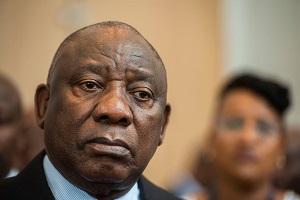Ebrahim Moosa – Radio Islam International | 13 Muharram 1437/13 December 2016
The colossal catastrophe which has been the plight of the Rohingya continues to worsen.
In the latest manifestation of the long-standing torment of the world’s most persecuted minority, Myanmar’s army has intensified a brutal offensive in the Rakhine State, leaving in its wake a trail of horror stories.
In an ominous escalation, verified images now show that the army has even begun training Rakhine laymen to take up arms against the Rohingya in what many fear may be the onset of the final stages of a slow-motion genocide.
Food and basic supplies have nearly run out, aid agencies and international observers have been refused access, and the military has imposed a devastating lockdown.
Helicopter gunships have rained terror from the skies, while on the ground, troops have been accused of hundreds of rapes, razing entire villages, arbitrary arrests, destroying mosques and ransacking homes.
Since October, more than 420 Rohingya civilians have been killed and in excess of 30 000 have been rendered refugees in their own homeland.
And as a fuller picture of the extent of the horror slowly emerges, it is becoming evident that from the arsenal of death unleashed against the Rohingya, fire is of the most favoured weapons.
“If the Naf River could talk, which horror story would it tell first?” TIME magazine recently posed, concerning the narrow waterway that separates Burma and Bangladesh.
A series of reports emanating from Arakan dated mid-November chronicle the chilling consequences of fire being used as a weapon of war on the Rohingya.
On the morning of November 13, 2016, a number of Rohingya women from Kyar Gaung Taung village in Northern Maungdaw Township reported having their children thrown into a fire by the Myanmar Army and Border Guard Police.
“The military took all of property, then they torched the houses. They threw our children into the fire,” a Rohingya woman claimed while crying loudly.
“They beat me and took all the money I had in my pocket. Then they kicked me out of my home and torched my house in front of me,” an elderly Rohingya from Kyar Gaung Taung village added.
Similar reports from the Ra Bai La area mention soldiers falling upon villagers who did not manage to flee in time. Resident Arifa Begum told Myanmar Observer sources her baby was thrown into the fire, as her house was burning. Correspondents said at least one more infant child was also thrown into the fire after being grabbed from its mother.
TIME recollects the story of Arafa, a 25-year-old Rohingya woman, who was forced to straddle through the River Naf with her five children.
“She used to have six,” the report tells.
“As she talks, sitting on the threshold of a hut in a makeshift refugee camp on the Bangladeshi side of the Naf, she is surrounded by her son and four young daughters. They are a lively bunch, noisy, restless, yet shy, hiding behind their mother’s back or running in and out of the hut, as she recounts what happened to her second son.
“He was 8 years old. Sometime around Nov. 22, Arafa says her village was attacked by Burmese security forces.”
In contrast to previous assaults, this time, Arafa says, the army’s assault felt different.
“The security men seemed more determined, more driven, to punish the Rohingya. Their weapon of choice was fire.
“Arafa says that the military torched her village. As the flames engulfed her home, she just about managed to escape with her six children. That was when the family was confronted by a Burmese soldier. He snatched the fleeing 8-year-old, separating him from his brother and sisters, and flung him into the blaze.
“In the chaos, Arafa lost sight of her husband. But she could not turn back; she had to leave him behind, leave her son’s charred body behind, and mourn on the move.
““I had to save my other children. We had to escape [from Burma],” she tells TIME. “They burned everything.””
The accounts that speak of this tyranny by fire represent but one facet of the ordeal of the Rohingya, but are evidently from amongst its most harrowing.
Satellite imagery released by Human Rights Watch show that more than 800 buildings were destroyed in five different Rohingya villages between Nov. 10 and 18. An earlier set of high-resolution images showed the destruction of more than 400 homes in three villages between Oct. 22 and Nov. 10. The actual number of destroyed buildings could be higher, given the dense tree cover in the area, the rights group says.
Verifying the picture on the ground is impossible, as Burma has sealed off the affected areas. But the news that is coming out suggests that the situation is “getting very close to what we would all agree are crimes against humanity,” says Yanghee Lee, the U.N. special rapporteur on human rights in Myanmar, as the country is officially known.
The People of the Ditch
The punitive fires unleashed against the Rohingya have in them some echoes of a narrative referred to in the Qur’aan(and expanded upon in the Ahadeeth) of a community persecuted for its faith whose tormentors came to be known as ‘Ashabul Ukhdood’ or the People of the Ditch.
After a young boy of that time gained ascendance for his faith, by which he performed miracles, cured the ill and called others to Allah, the ruler of the era grew perturbed and sought to extinguish this movement of faith before it grew in strength.
Hoping to instil fear in the young boy, the King ordered that the boy’s two followers in faith be hacked to death before his eyes.
This, however, failed to reap the desired effect, spurring the King on to take more drastic measures to exterminate the boy himself.
These too backfired, when in two subsequent attempts the King’s courtiers were killed, but the boy returned unscathed.
Eventually the boy himself suggested to the King: “You cannot kill me until you do what I ask you to do”. Upon the King’s prompting, the boy said: “You should gather people in a plain and hang me by the trunk (of a tree). Then take hold of an arrow from the quiver and say: ‘In the name of Allah, the Lord of the worlds’, then shoot an arrow. If you do that, then you would be able to kill me.”
The king called upon his people to assemble in an open plain and tied the boy to the trunk of a tree. He then took hold of an arrow from his quiver and placed it in the bow saying: “In the Name of Allah, the Lord of the young boy”.
He then shot it striking the boy’s temple. The boy placed his hands upon the temple where the arrow had hit him and passed on. Immediately the people assembled said: “We affirm our faith in the Lord of this young man, we affirm our faith in the Lord of this young man, we affirm our faith in the Lord of this young man”.
The courtiers hurried to the king and conveyed to him: “Do you see that Allah has actually done what you aimed at averting. They (the people) have affirmed their faith in the Lord.”
Sensing the ineptitude of his scheming, the king commanded ditches to be dug at certain points in the path. When they were completed and fire was lit in them, it was said to the people: “He who would not turn back from his (the boy’s) religion would be thrown in the fire or it would be said to them to jump in it”
The people wholeheartedly chose death – not renouncing their religion – until a woman who came along with her child began showing some hesitance in jumping into the fire. So her child said to her: “O mother, endure (this ordeal) for it is the Truth.”
The purport of this incident is captured in the following verses of Surah al Burooj (Qur’aan, Surah 85). Its promise of Divine retribution for the oppressors and ultimate bliss for the persecuted no doubt offers a rare but firm ray of solace for the Rohingya – stateless, friendless and forgotten – as they singlehandedly confront the infernos of hatred, subjugation and extermination in their historical homeland.
“By the heaven, holding the big stars. And by the Promised Day. And by the witnessing day, and by the witnessed day. Cursed were the people of the ditch. Fire supplied (abundantly) with fuel. When they sat by it (fire). And they witnessed what they were doing against the believers (i.e. burning them). They had nothing against them, except that they believed in Allah, the All-Mighty, Worthy of all Praise! Who, to Whom belongs the dominion of the heavens and the earth! And Allah is Witness over everything. Verily, those who put into trial the believing men and believing women (by torturing them and burning them), and then do not turn in repentance, (to Allah), will have the torment of Hell, and they will have the punishment of the burning Fire. Verily, those who believe and do righteous good deeds, for them will be Gardens under which rivers flow (Paradise). That is the great success. Verily the Grip (Punishment) of your Lord is severe. Verily, He it is Who begins (punishment) and repeats.And He is Oft-Forgiving, full of love. Owner of the throne, the Glorious. He does what He intends (or wills). Has the story reached you of the hosts, Of Fir’aun (Pharaoh) and Thamud? Nay! The disbelievers (persisted) in denying. And Allah encompasses them from behind. Nay! This is a Glorious Qur’an. (Inscribed) in Al-Lauh Al-Mahfuz (The Preserved Tablet)!”







0 Comments